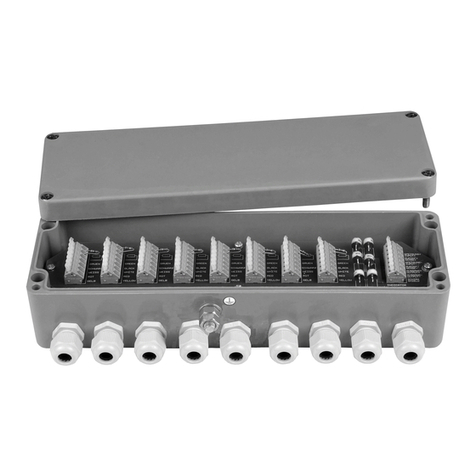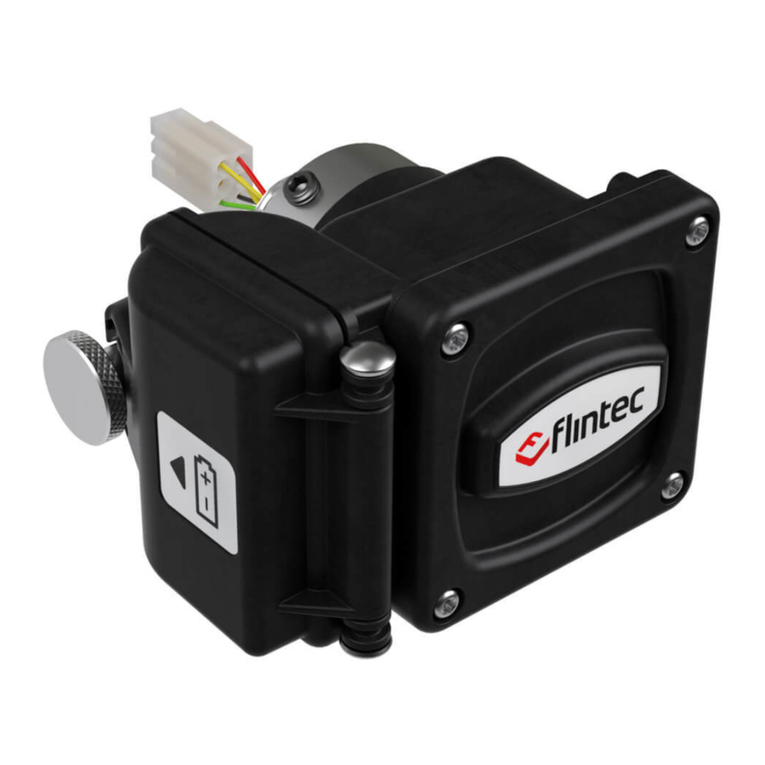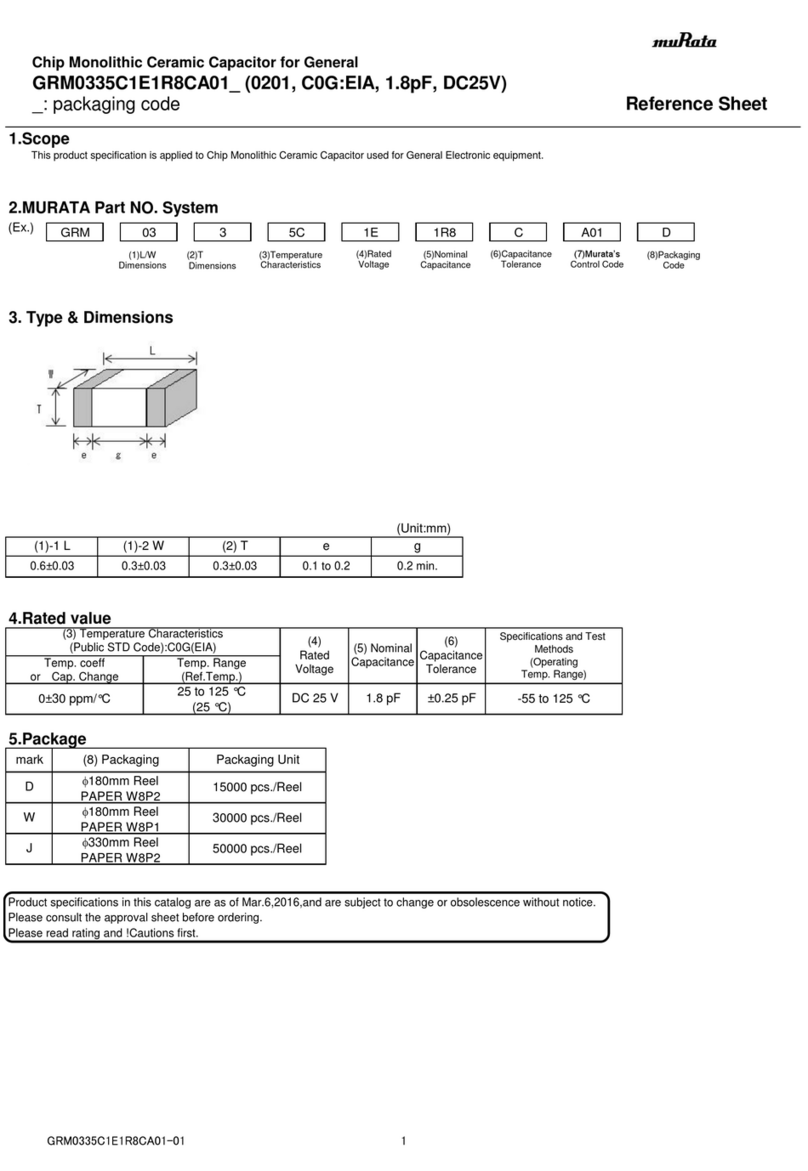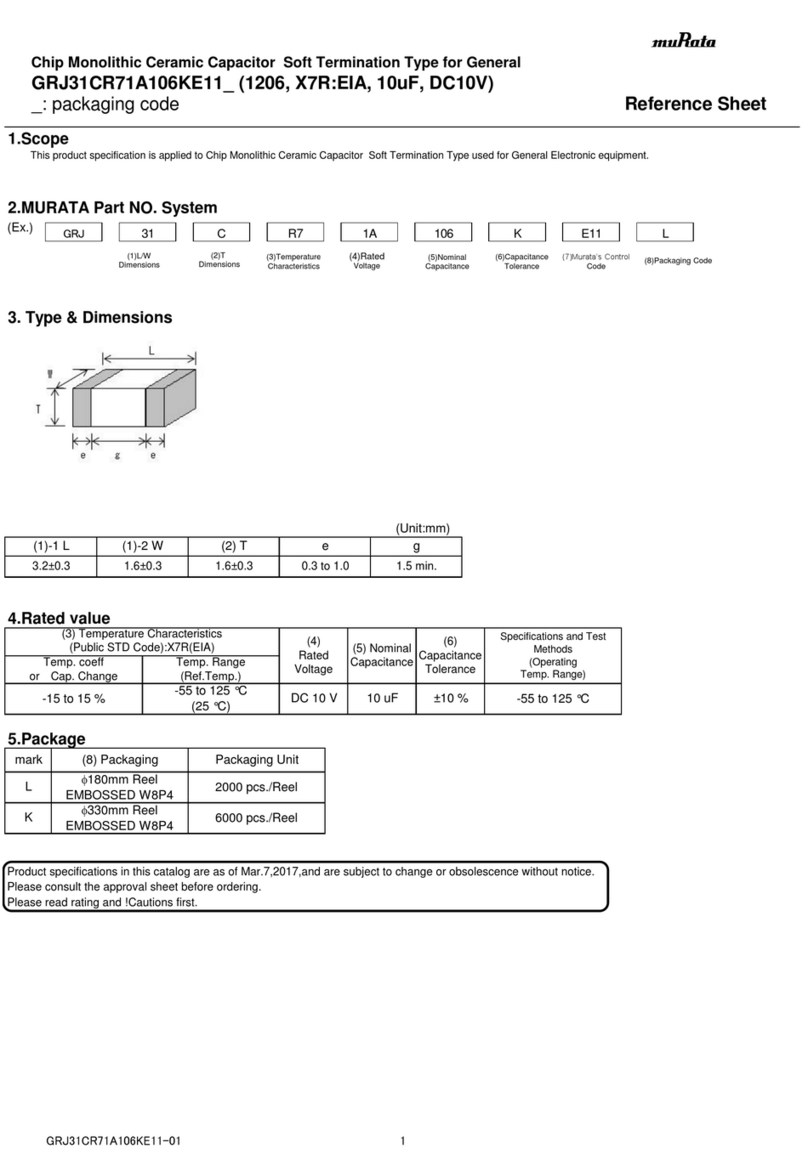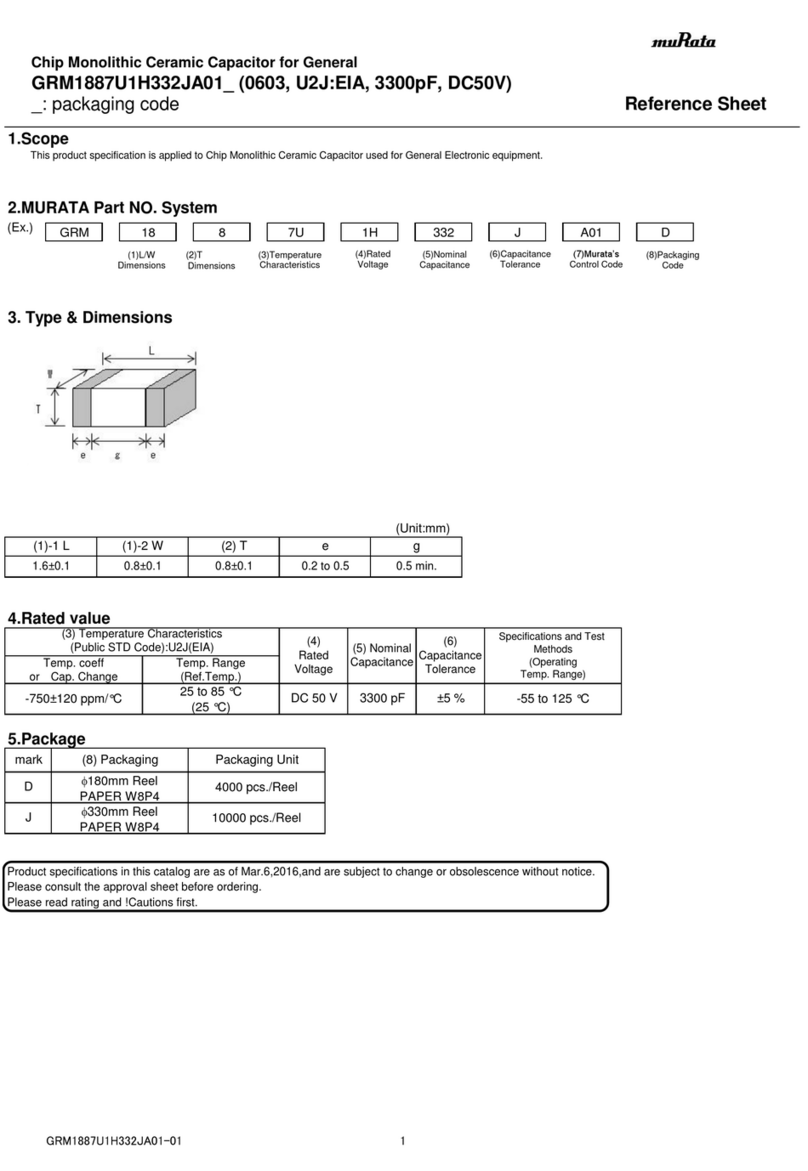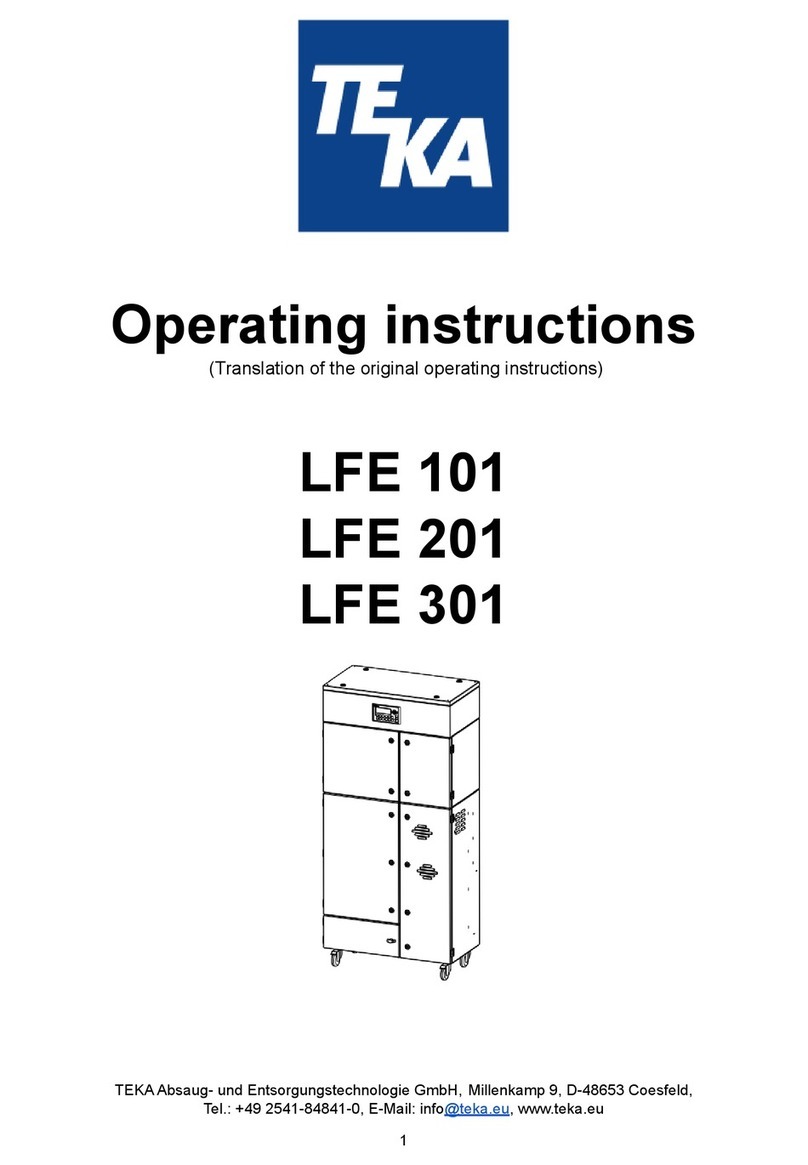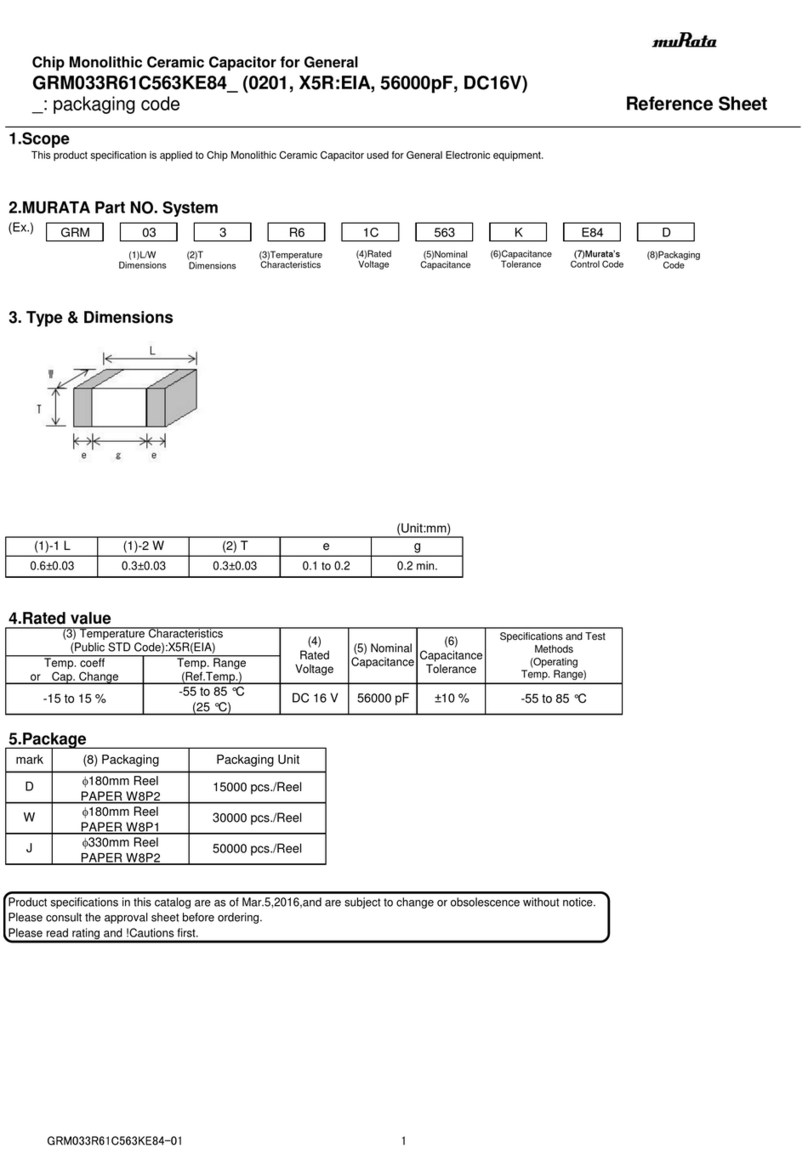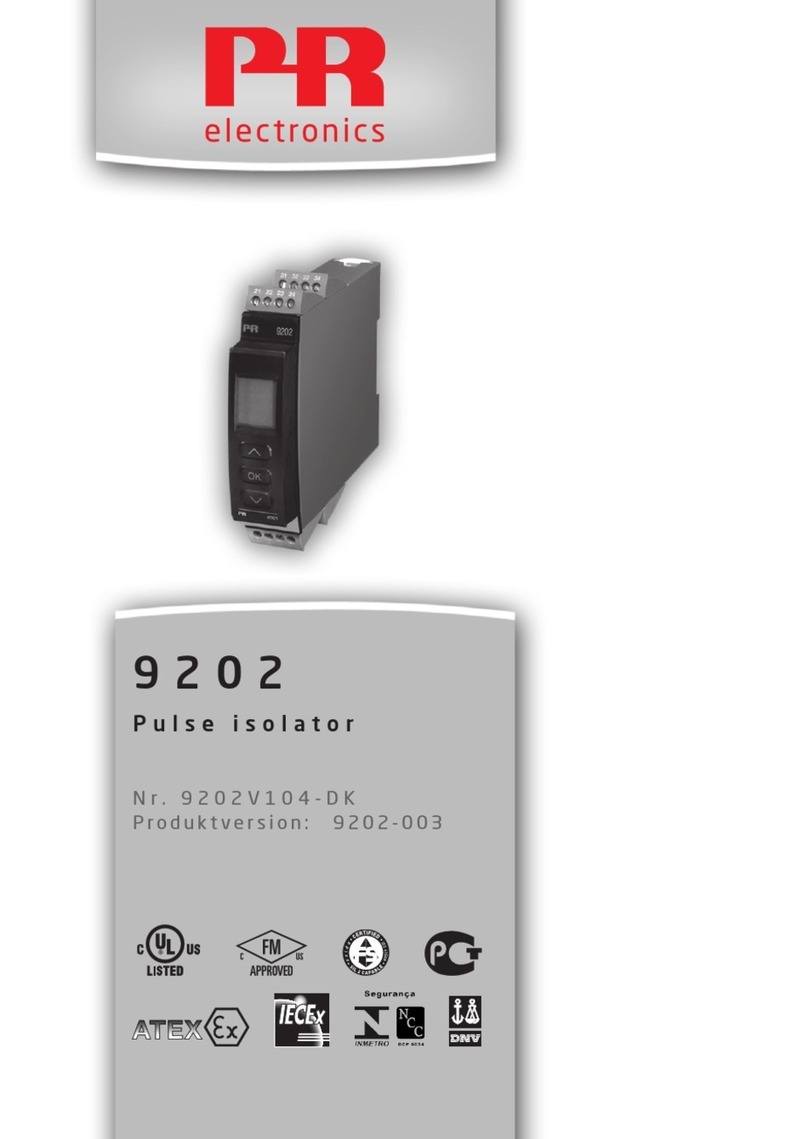Flintec KAK-4 User manual

Junction Box
Type KAK-4
T
TE
EC
CH
HN
NI
IC
CA
AL
L
M
MA
AN
NU
UA
AL
L
Flintec GmbH
Bemannsbruch 9
74909 Meckesheim
GERMANY
www.flintec.com

Junction Bo Type KAK – Technical Manual, Rev. 1.00 August 2007
Page 2 of 4
RIGHTS AND LIABILITIES
All rights reserved.
No part of this publication may be reproduced, stored in a retrieval system, or transmitted in any form or by
any means, mechanical, photocopying, recording, or otherwise, without the prior written permission of Flintec
GmbH
No patent liability is assumed with respect to the use of the information contained herein. While every
precaution has been taken in the preparation of this book, FLINTEC assumes no responsibility for errors or
omissions. Neither is any liability assumed for damages resulting from the use of the information contained
herein.
The information herein is believed to be both accurate and reliable. FLINTEC, however, would be obliged to
be informed if any errors occur. FLINTEC cannot accept any liability for direct or indirect damages resulting
from the use of this manual.
FLINTEC reserves the right to revise this manual and alter its content without notification at any time.
Neither FLINTEC nor its affiliates shall be liable to the purchaser of this product or third parties for damages,
losses, costs, or expenses incurred by purchaser or third parties as a result of: accident, misuse, or abuse of
this product or unauthorized modifications, repairs, or alterations to this product, or failure to strictly comply
with FLINTEC operating and maintenance instructions.
FLINTEC shall not be liable against any damages or problems arising from the use of any options or any
consumable products other than those designated as Original FLINTEC Products.
NOTICE: The contents of this manual are subject to change without notice.
Copyright © 2007 by Flintec GmbH, 74909 Meckesheim, Bemannsbruch 9, Germany
S
AFETY
I
NSTRUCTIONS
CAUTION READ this manual BEFORE operating or servicing this equipment. FOLLOW
these instructions carefully. SAVE this manual for future reference. DO NOT allow untrained
personnel to operate, clean, inspect, maintain, service, or tamper with this equipment.
ALWAYS DISCONNECT this equipment from the power source before cleaning or performing
maintenance. CALL FLINTEC ENGINEERING for parts, information, and service.
WARNING ONLY PERMIT QUALIFIED PERSONNEL TO SERVICE THIS EQUIPMENT.
EXERCISE CARE WHEN MAKING CHECKS, TESTS AND ADJUSTMENTS THAT MUST BE
MADE WITH POWER ON. FAILING TO OBSERVE THESE PRECAUTIONS CAN RESULT
IN BODILY HARM.
WARNING FOR CONTINUED PROTECTION AGAINST SHOCK HAZARD CONNECT
TO PROPERLY GROUNDED OUTLET ONLY. DO NOT REMOVE THE GROUND PRONG.
WARNING DISCONNECT ALL POWER TO THIS UNIT BEFORE REMOVING THE
FUSE OR SERVICING.
WARNING BEFORE CONNECTING/DISCONNECTING ANY INTERNAL ELECTRONIC
COMPONENTS OR INTERCONNECTING WIRING BETWEEN ELECTRONIC EQUIPMENT
ALWAYS REMOVE POWER AND WAIT AT LEAST THIRTY (30) SECONDS BEFORE ANY
CONNECTIONS OR DISCONNECTIONS ARE MADE. FAILURE TO OBSERVE THESE
PRECAUTIONS COULD RESULT IN DAMAGE TO OR DESTRUCTION OF THE
EQUIPMENT OR BODILY HARM.
CAUTION OBSERVE PRECAUTIONS FOR HANDLING ELECTROSTATIC SENSITIVE
DEVICES.

Junction Bo Type KAK – Technical Manual, Rev. 1.00 August 2007
Page 3 of 4
I
NTRODUCTION AND TECHNICAL
D
ATA
The Aluminium junction box is designed for the parallel connection of 4 load cells.
Type No. of load cells Housing size Inputs Output
KAK-4 up to 4 80 x 250 x 52 mm 4x M16 1x M16
The junction box type KAK can be connected to the instrumentation with a shielded 6-wire signal cable.
The corner correction is done with resistors and/or potentiometer.
Housing material: Aluminium
Protection class: IP66
Cable connection: With clamping terminals
Corner correction: By exchangeable resistors and/or potentiometer
M
ECHANICAL
I
NSTALLATION
Look for a mounting location which is more or less dry and protected from environmental stress.
E
LECTRICAL
C
ONNECTIONS
Figure 1: Dimensions in [mm]
The connection sequence of the load cells should correspond to the corners of the scale, i.e
Corner 1 = Load cell 1, Corner 2 = Load cell 2, etc.
L
OAD
C
ELL
C
ABLE
C
ONNECTION
First the cable gland (see in fig.1) must be loosened. Then you have to feed the load cell cable through the
cable gland unless the shrink tube is fully disappeared in the box. The wires have to run below the printed
circuit board and will be pulled back to the top at the upper end of the printed circuit board. Afterwards you can
connect the cables to the clamping terminals as indicated below:
Cable coulour Description Terminal designation
yellow = Cable shield Shield / Schirm
red = Signal – (Output –) red / rot
white = Signal + (Output +) white /weiss
black = Excitation – (Input –) black / schwarz
(if applicable, brown)* = Sense – black / schwarz
green = Excitation + (Input +) green / grün
(if applicable, blue)* = Sense + green / grün
* if load cell is equiped with 6-wire conductor cable
After all conductors have been clamped to the terminals, the cable glands must be tightened. Please verify
that all cable glands are tight and the cable is fully stress relieved.

Junction Bo Type KAK – Technical Manual, Rev. 1.00 August 2007
Page 4 of 4
O
UTPUT
C
ABLE
C
ONNECTION
The signal cable (connection between junction box and the following electronics) should be a 6 – wire
shielded cable and has to be kept as short as possible. Because this cable usually has a larger diameter than
the load cell cable, you should use the larger cable gland in the middle of the box. Depending on type and
manufacturer signal cables may have different colours. Therefore make your own choice.
Cable colour, example Description / Terminal designation
outer cable screen = Shield
pink = Signal – (Output –)
white = Signal + (Output +)
grey = Sense –
brown = Excitation – (Input –)
yellow = Sense +
green = Excitation + (Input +)
C
ORNER
C
ORRECTION AT
S
CALES WITH
F
LINTEC
L
OAD
C
ELLS
Flintec load cells are manufactured with rather tight tolerances, so in most cases an additional corner
correction is not required. The best conditions are achieved if you use load cells of the same class
(Designation is done with capital letters A to I on the load cell package besides the type label).
Hint: Corner errors can have a mechanical background, e.g. sloped mounting surface of the load cell.
Procedure:
1. The jumpers JP1 to JP4 should stay installed. This will disable the potentiometers.
2. The 0 Ohm jumpers instead of the correction resistors must be in place (shipment status).
3. Get the display value for each corner. Use the highest possible display resolution (e.g. factor 10 or higher)
or, if this is not possible, measure the the digital weight increment using corresponding weights.
4. The corner with the lowest display value is the starting point for the corner correction. The differences of
the other corners are calculated with reference to this “basic corner”.
5. Calculate the correction resistance as follows:
Deviation in [kg]
Correction resistance [Ω] = Test load in [kg] X Input resistance of the load cell [Ω] *
* 1100 Ωinput resistance for: BK2, SB4, SB5, SB6, SB14, SLB, ZLB, UB1, UB5, UB6, PB, RC3
400 Ωinput resistance for: RC1, SB2
Example 1: 1100 Ωload cell
0.1 kg corner error with 500 kg test load
0.1 kg
500 kg x
1100 Ω
ΩΩ
Ω
=
0.22 Ω
Example 2: 400 Ωload cell
10 kg corner error with 5000 kg test load
10 kg
5000 kg x
400 Ω
ΩΩ
Ω
=
0.8 Ω
6. Install the correction resistor into the junction box instead of the 0 Ohm jumper for the corresponding load
cell excitation OR adjust the potentiometer (see below).
7. Check the corners again. If required repeat the procedure.
Hint: 50 ppm resistors for corner correction are available as a set of 14 values from 0.22 Ωto 4.7 Ω(10 pcs.
for each value; article no. 5200-030).
Correction by Potentiometer Adjustment
The calculated correction resistance is also used as the starting point when the correction is made with the
potentiometers P1 to P4 (25 turns, 10 Ohm Cermet- precision trimmer). When shipped all potentiometers are
in the middle position (appr. 5 Ohm) and disabled by the jumpers JP1 to JP4 (short-circuit). If a potentiometer
shall be enabled, the corresponding jumper JPx has to be removed.
First you have to turn the potentiometer to the clockwise end position (clicking noise). Afterwards you turn the
potentiometer counterclockwise until the computed correction resistance is adjusted.
• Use suitable screwdriver !
• One turn corresponds to appr. 0.4 Ohm
• Clockwise end position = 0 Ohm
• Counterclockwise end position = 10 Ohm
Hints for Poti
adjustment:
• 0 Ohm jumpers instead of correction resistors must stay in place
In the junction box you can also find a dry tablet in a plastic bag. Open the bag and leave the tablet in the
junction box. This will absorb moisture up to a certain degree. Check the cover sealing and install the cover of
the box.
Other Flintec Industrial Electrical manuals
Popular Industrial Electrical manuals by other brands

Lucent Technologies
Lucent Technologies Lineage 2000 ECS Battery Plant product manual

Murata
Murata GRM033R60G474ME90 Series Reference sheet

PPM
PPM Q1 Anti-Static Gun user manual
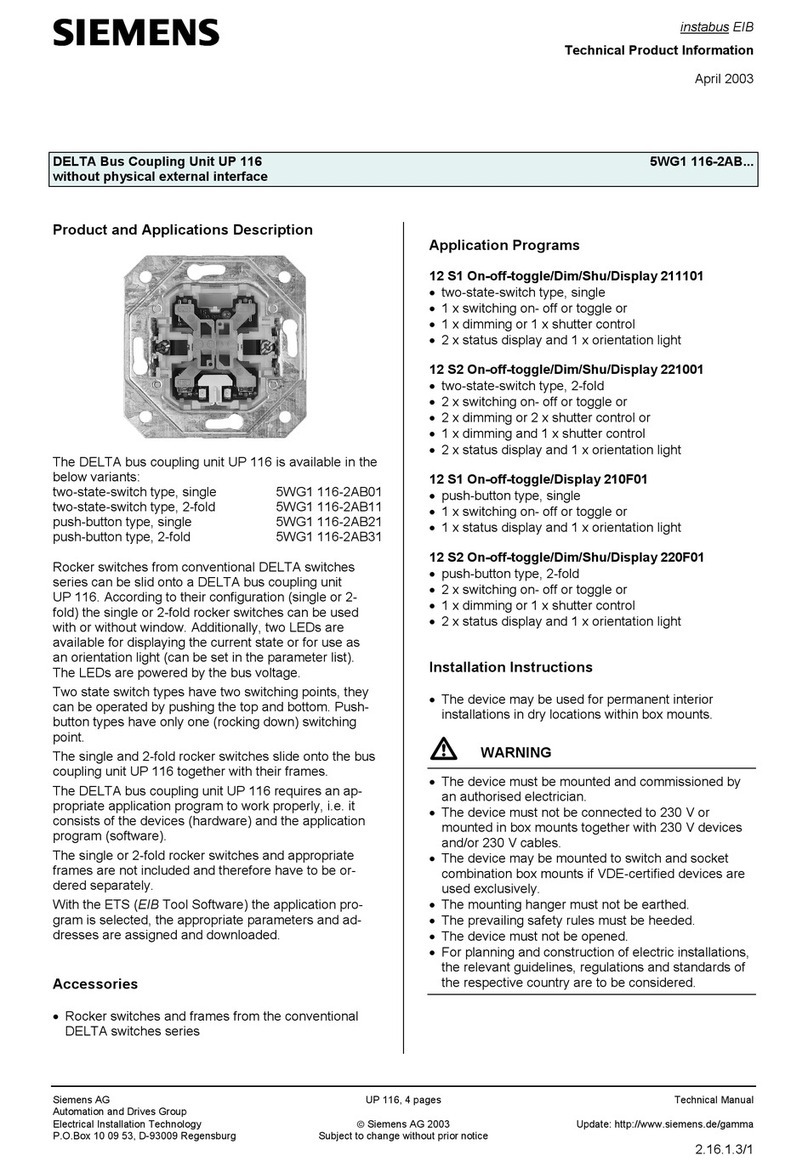
Siemens
Siemens 5WG1 116-2AB11 Technical product information
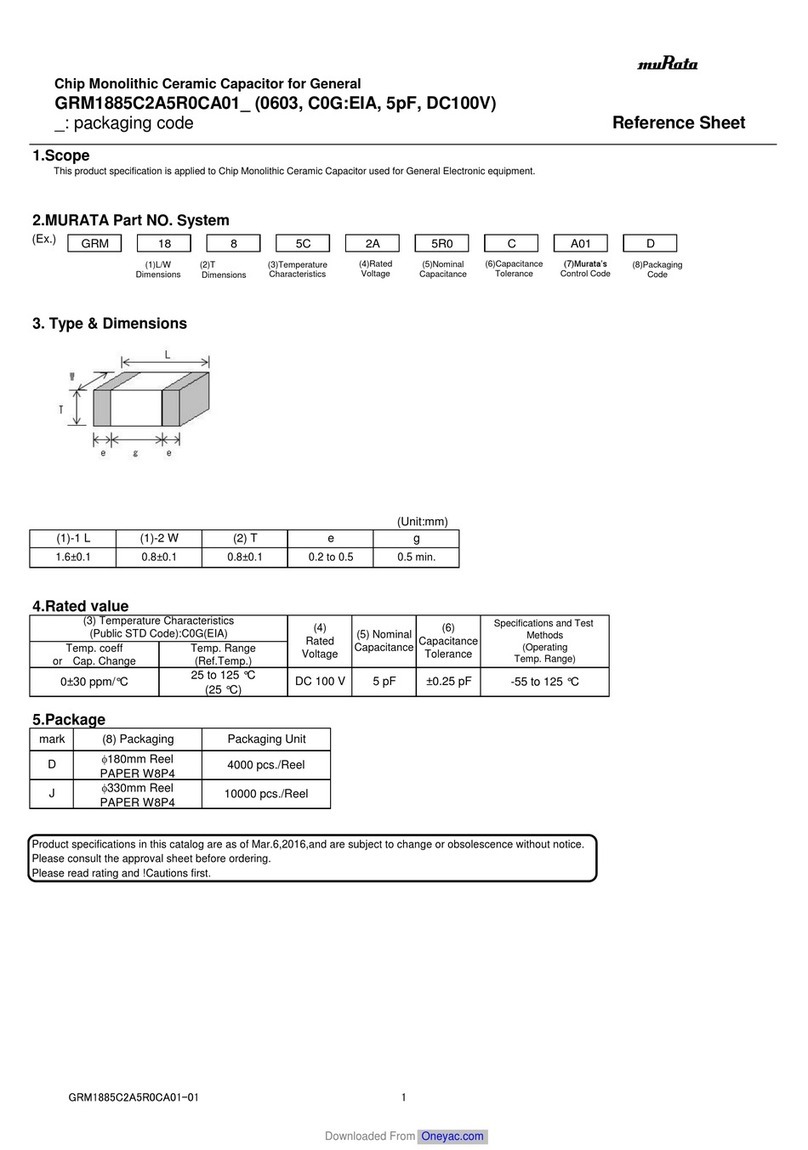
Murata
Murata GRM1885C2A5R0CA01 Series Reference sheet
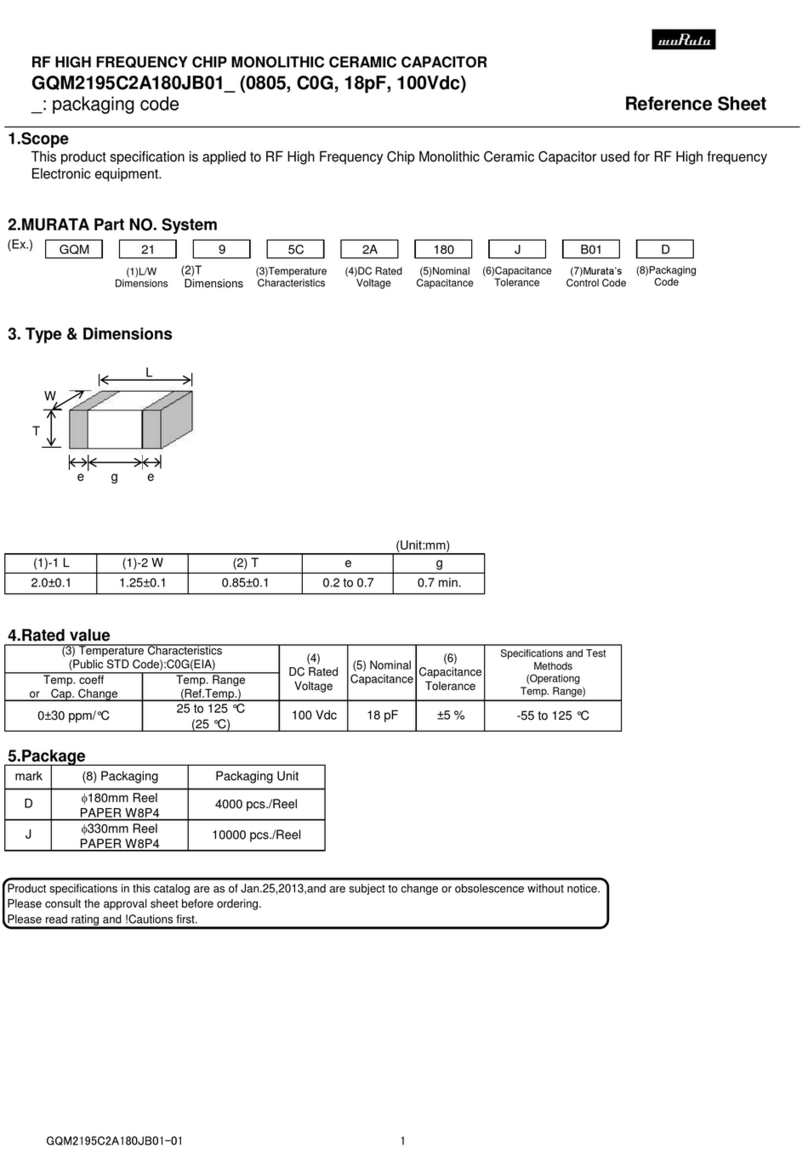
Murata
Murata GQM2195C2A180JB01 Series Reference sheet
